Design of LED Module based on WS2811 LED driver IC (Only Red-channel is shown).

To the right of the schematic you will find a simple, cheap and robust constant current LED driver. The current for the connected LED(s) can be easily adjusted with R4 (in this case about 344mA).
On the left is the 3-channel pixel LED driver WS2811. The outputs can only "sink" (active low) with up to 18.5 mA per channel (Only low is driven).
In between is the Connector circuitry that links the outputs of the WS2811 to the constant current driver.
This concept gives me the ability to use different LED configurations for different applications (e.g. High/Medium/Low Current LEDs on J3).
Independently, the LED controller/Driver Circuit and the constant current driver work fine and for this I also have all the components in stock.
My challenge lies with Connector circuit between these two circuits. For this purpose, I have now chosen Q1 (2N3906) with the 100 Ohm resistor. This one ensures that the LED does get turned on. However, when turned off, the LED goes off very slowly. This is of course not the intention when you want to show color patterns.
I would really appreciate it if someone could tell me where it goes wrong in this circuit or what could be better in this section.